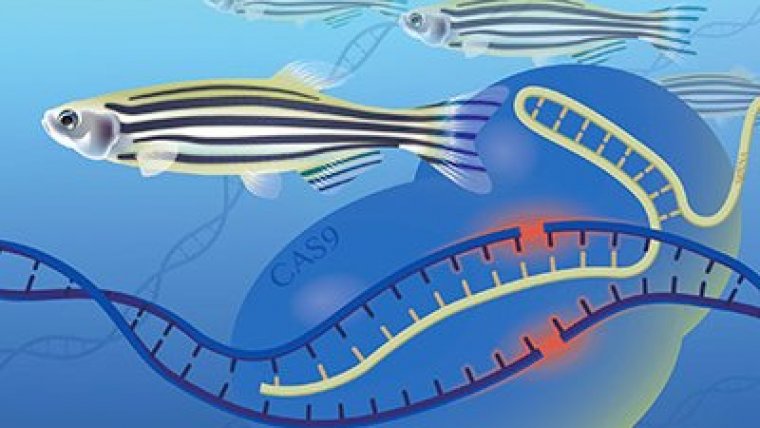| News / Science News |
A new role for zebrafish: larger scale gene function studies
NIH | JUNE 11, 2015
A relatively new method of targeting specific DNA sequences in zebrafish could dramatically accelerate the discovery of gene function and the identification of disease genes in humans.

NHGRI scientists are homing in on specific genes in zebrafish. ![]()
The gene-editing technology known as CRISPR/Cas9 is six times more effective than other techniques at homing in on target genes and inserting or deleting specific sequences. The method can be used in a “multiplexed” fashion – that is, targeting and mutating multiple genes at the same time to determine their functions.
Such larger scale gene targeting in an animal model could be particularly useful for human genomic research. Only 10 to 20 percent of recognized human genes have been subjected to such rigorous testing. The functions of many other genes have been inferred based on analyzing proteins or have been identified as possible disease genes, but the functions of those genes have not been confirmed by knocking them out in animal models and seeing what happens.
The zebrafish is better suited to larger scale gene editing because about 70 percent of zebrafish genes appear to have human counterparts.
YOU MAY ALSO LIKE




